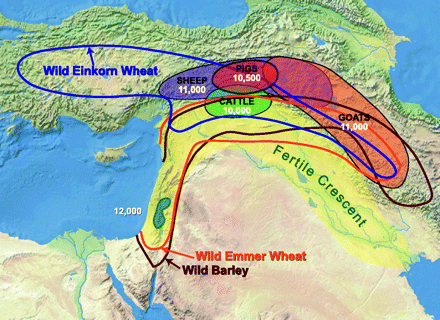 You’ve heard about the chicken and the egg, and which came first. What of the grain and the tuber? Most experts would argue the egg came first and for a long time experts also argued that grains were cultivated before tubers. Recent research challenges that assumption. As foragers we are always on the look-out for grains but you might want to reconsider the role of tubers.
You’ve heard about the chicken and the egg, and which came first. What of the grain and the tuber? Most experts would argue the egg came first and for a long time experts also argued that grains were cultivated before tubers. Recent research challenges that assumption. As foragers we are always on the look-out for grains but you might want to reconsider the role of tubers.
For certainly a century or more most experts thought grains were the first cultivated crop, around 13,000 years ago, either in the Middle East — see map above — or perhaps China. We also know grains were not commonly consumed before that judging from middens, ancient latrines and other archaeological digs. Grains are tough. They have lectins to prevent them from being eaten — the poison ricin is a lectin — and they preserve readily. Some viable grains have been found in Egyptian pyramids, making them thousands of years old. Read grain stores well. It also gave rise to ancient Egypt and its stores of grain that kept Greeks and Romans alive and was part of the intrigue between the power ménage à trois of Augustus Caesar, Cleopatra and Mark Antony.
However, South American researchers disagree grains came first. They say tuberous vegetables were cultivated as long ago as grains, perhaps earlier. Why? Easier to grow, less labor involved, and more calories for in for the effort out. Cultivating tubers over grains would have been reasonable, they say. The big impediment to previous research, besides most of researchers being European, is that tubers are fleshy and wet growing in humid areas whereas grains are dry little packets grown in dryer areas. Unattended grains tend to get preserved, tubers become dust. But modern research methods can date tuber cultivation back to at least as far as grains. They also argue tubers are more likely to have come first because they are much easier to propagate. Many tuberous plants can be grown from tubers, cuttings and or seeds whereas to get grain you need grain.
For our purposes which is more calories positive — grain or tubers — might depend upon where you live and how much of it is growing. If you live in the Great Lakes areas where there are acres of wild rice it might be your staple of choice. It will require harvesting, processing, storage and preparation that burns up a lot of calories. Locally tubers — such as ground nuts or the Winged Yam — would be the staple of choice plus they require far less energy to harvest and prepare. Where tubers can fall short is long term storage (unless you just leave them in the ground. )
To read more about wild rice go here, for ground nuts, go here. Related articles are Wild Flours, and Finding Caloric Staples.
It was a long weekend with classes in south Florida. Saturday started with getting up at 4:30 a.m. and hopping on the motorcycle for a ride down to Andy Firk’s Bamboo Cove in Arcadia. Dawn came around Bowling Green (Florida, think exact middle of the peninsula.) The backside of Hurricane Sandy was driving a southwest wedge across the sky. Behind me were black clouds, ahead Florida blue sky, but to the east at the point of the wedge the sun poured through like molten iron from a forge, a fiery reminder of natures’s energy. The angry dawn festered for more than an hour… then the winds came turning my wheels into a sail.
Andy has a wondrous array at Bamboo Cove: Homesteading, permaculture, living off the grid, back to nature, growing this or that and eating your own produce … that’s Andy’s place. There were one and two hour classes both days and folks could pick and chose which classes to attend for a small donation. Andy is planning another event in 2013 and we’ll bring you the details here when known. Weather, night and previous plans forced me to leave before the second half of Mycol Stevens presentation on Florida mushrooms, which is just an excuse to hear his presentation again. Mycol will be hosting another annual Florida Earthskills Gathering in February Gainesville, Fl. You can get some general details here.
Sunday we had a large class in Port Charlotte with nearly perfect weather, warm but not too hot and enough breeze to keep any hungry mosquitoes away. While we saw dozens of edible species there were some standouts. The tart False Roselle usually gets a good reception and oddly there were a few black coco-plums still available. Their season ended quite a while ago and even one white plum was found. Sea-grapes are a favorite and learning about Florida’s prime staple, the Winged Yam, usually gets folks traipsing in the woods. But the show was stolen by ripe ground cherries for two reasons: They are often difficult to find ripe, and they are tasty. It was a win win. Sorting out exactly which species of ground cherry ones has can be a bit of a headache. This particular one appears to be Physalis angustifolia, I say appears because leaf length and width can vary to the point of head scratching. The main point with a ground cherry (and the ripe Solanum americanum berries) is not to consume them if they are bitter.
People’s opinion of armadillos vary greatly though Americans ate many of them during the “Great Depression. “Hoover Hogs” they were called. Whether cooked in the shell or not armadillos have several interesting characteristics beyond culinary. Mom armadillo has one egg that always divides into four giving birth to four genetically identical pups, either all male or female. Adult armadillos have a specific gravity of 1.6. So if they can’t find a bridge over troubled water they cross by walking on the bottom. It also helps that Armadillos can hold their breath for about six minutes. One expert tells us the majority of Armadillos do not die of old age, hunting or disease. The armadillo’s Grim Reaper is vehicles which is why the bony quadrupeds are common road kill. Why are they such highway victims? A quirk in their defense system that was around long before cars. When alarmed armadillos arch their backs and jump straight up in the air often into the under carriage of speeding vehicles. To read more about armadillos and the related topic of leprosy, click here.Pending weather is important to foraging (and a lot of other outdoor activities.) You can predict the weather as accurately as the weather bureau on a 24-hour basis just by watching clouds. More so, studying clouds for the weather can be done in a comfortable hammock with appropriate refreshments if not with another dedicated student of the mist. Clouds and their behavior are directly related to the weather, from high icy “mackerel skies” (good weather) to an anvil cloud with a sudden drop in wind temperature (a thunder storm is imminent.) There are posters and books with photos of clouds and the weather associated with them. Or you can visit the Cloud Appreciation Society. which has some amazing cloud photos. The society has set a new goal of having a new class of cloud made official. Called undulatus asperatus (agitated wave) they have petitioned the World Meteorological Organization in Geneva to add it to their cloud collection. The society also wants the new cloud included in the International Cloud Atlas, last updated in 1975. (For such ephemeral things cloud classifications are rather static.) Cloud watching is a pleasant hobby you can do anywhere in the world any time. It is also part of personal competence when away from official sources of weather information. As they say, things are looking up.
A follow up on edible snails. Two points to make. They must be handled very carefully, preferably with rubber gloves on or the like. Snails themselves are not much of a problem but they can carry some serious diseases to humans. This is particularly true of the Giant African Land Snail (GALS). Florida is trying to get rid of the snail which in theory could live as far north as New Jersey. GALS feed on over 500 species of plants making them quite adaptable. When older they also feed on each other. When raised in captivity as pets or food they’re fed a diet of lettuce, chicken feed, and commercial snail food. They’re also cooked, sliced, canned and sold as escargot. Again, the problem is the multitude of potential really bad diseases they can carry. The state of Florida wants you to report them so they can come and eradicate them (one woman had 18,000 of them in her back yard … can you say feast?) Should you be tempted to eat said purge them, feed them wholesome food, wear latex gloves while handling, and cook very, very thoroughly. Thailand is considering raising them commercially.
I wrote to Dr. Paul E. Skelley, Entomologist, Collections Manager, Florida State Collection of Arthropods, about GALS. Skelley said “Yes, Achatina fulica is edible (Being edible and eatable are two different things!) and are often the snail in canned snails at various stores. As you say, assuming they are free of toxic chemicals (unlikely in the Miami-Dade urban situations where they are known) and are cooked thoroughly enough to kill any parasites or diseases they may harbor. What I’ve seen of the process to make even healthy snails eatable is more work than it is worth. Even then there are risks. In my opinion, eating wild collected snails should only be done in an ‘eat-snail-or-die’ survival situation.”
There. You have both views. To read about other snails go here.
And It Had To Happen. We’ve all seen deer crossing signs, perhaps even deer beside the road. As a motorcyclist who often gets up at 3 a.m. to ride to another part of the state to teach a class I am very wary of deer in the dark. And some of us may have even carried home venison from previous collisions. Deer crossing signs warn us of where the animals have been seen regularly crossing. This upset a caller to a North Dakota radio station (Y94) recently. Here is a transcript of the call:
“My frustration is that, Minnesota and North Dakota Departments of Transportation would allow these deer crossing in such high traffic areas. I mean, I’ve even seen them on the interstate. Why are we encouraging deer to cross at the interstate? I don’t get it. I mean, I understand that deers are animals and they need to travel across the streets occasionally to survive and of course to find food but it seems to me… so irresponsible of us to allow these deer crossings to be in areas where these deer are so likely to be struck by oncoming traffic. Wouldn’t you agree?”
Oooookay…. That reminds me somewhat of a friend. He was short and stocky and by his mid-30s had classic male-pattern baldness with just a fringe from ear to ear. One day at breakfast he mentioned in passing that he was going to get a hair cut to which his 17-year old daughter asked why he always got the same hair cut leaving him with no hair on top. She suggested he try a different style and leave the hair on top on.
To donate to the Green Deane Newsletter click here.

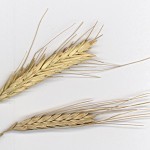

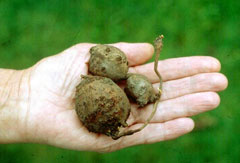
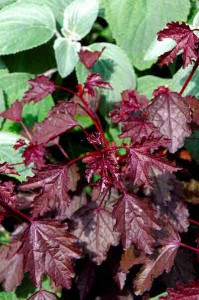
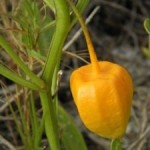
![Armadillo[1]](https://www.eattheweeds.com/wp-content/uploads/2017/09/Armadillo1.png)

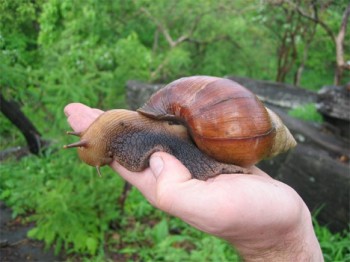
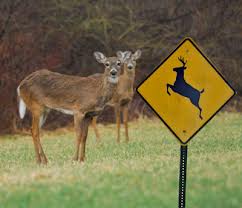

This is very funny indeed! My nephew said the same thing to his father one morning in the bathroom as his father was shaving, except Shawn was staring up at Mark’s hair, or lack thereof, for a while and asked him why he always got his hair cut like that. Haha, Shawn was on 7 years old at the time.
Always a real treat!!!……so much interesting and varied info!
I am a painter and lover of sky and clouds!……many thanks for
the fantastic cloud link!
Slainte!
Cynthia
Thanks for the read, enjoyed the extra artistry and effort.
Yes, thanks again for all the great info. I always look forward to your newsletter! The original call about the deer crossing signs can be found on youtube.. Hilarious! 🙂
What a great newsletter. Plants, clouds, armadillos! You outdid yourself this time, Deane.
I came across a shrub while in Frenchmans forest with an interesting looking and smelling fruit. The Shrub was about 4 feet tall with leathery simple toothless alternate leaves about 2-3 inches long with only one central vine and oblong. the stem has breen on the underside and brown on top side runing in a stripe along the length of the stem. The fruit looks like a cocoplum and is about the same size but is lemon yellow when ripe , the yellow skin and fruit is fleshy like a plum and has a sweet fragrance with a nearly round central pit. there are thorns growing from the base of the leaves on the length of the branch/stem except the last few inches. the new fruit is green. On the older growth (where the thorns are) there is a different leaf pattern. The leaflet seems to grow out on a short stem, produce a thorn on the underside and then branch out to a one, two or three leaved arrangement. the clusters are alternate with only one thorn per cluster on the underside of each. This looks and smells edible and I thought it might be a relative of a plum or jujube family but cannot find anything else about it. Thanks for your help in advance
Perhaps a Ximenia americana. See artile elsewhere on site.
https://www.eattheweeds.com/ximenia-americana-known-by-many-names-2/
Have you ever thought of doing piece on Jerusalem Artichokes? They are a great tuber. I was given a piece of one at a foraging class and have been planting them in my garden ever since. The one thing I like about them, from what I have read, is that, unlike potatoes, they don’t cause your blood sugar to spike. Being diabetic I find that important.
I have just such an article: https://www.eattheweeds.com/jerusalem-artichoke-root-them-out/
Tubers, armadillos, and deer-crossing humor! Thank you so much for sharing your knowledge and wit in Eat the Weeds. You make my life better!
🙂